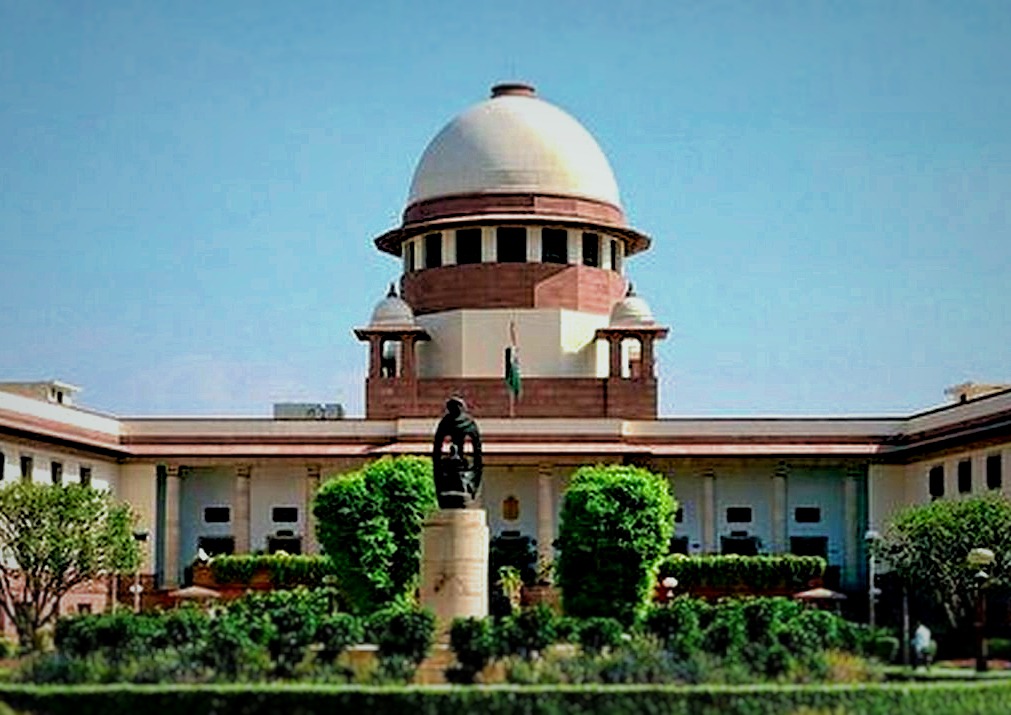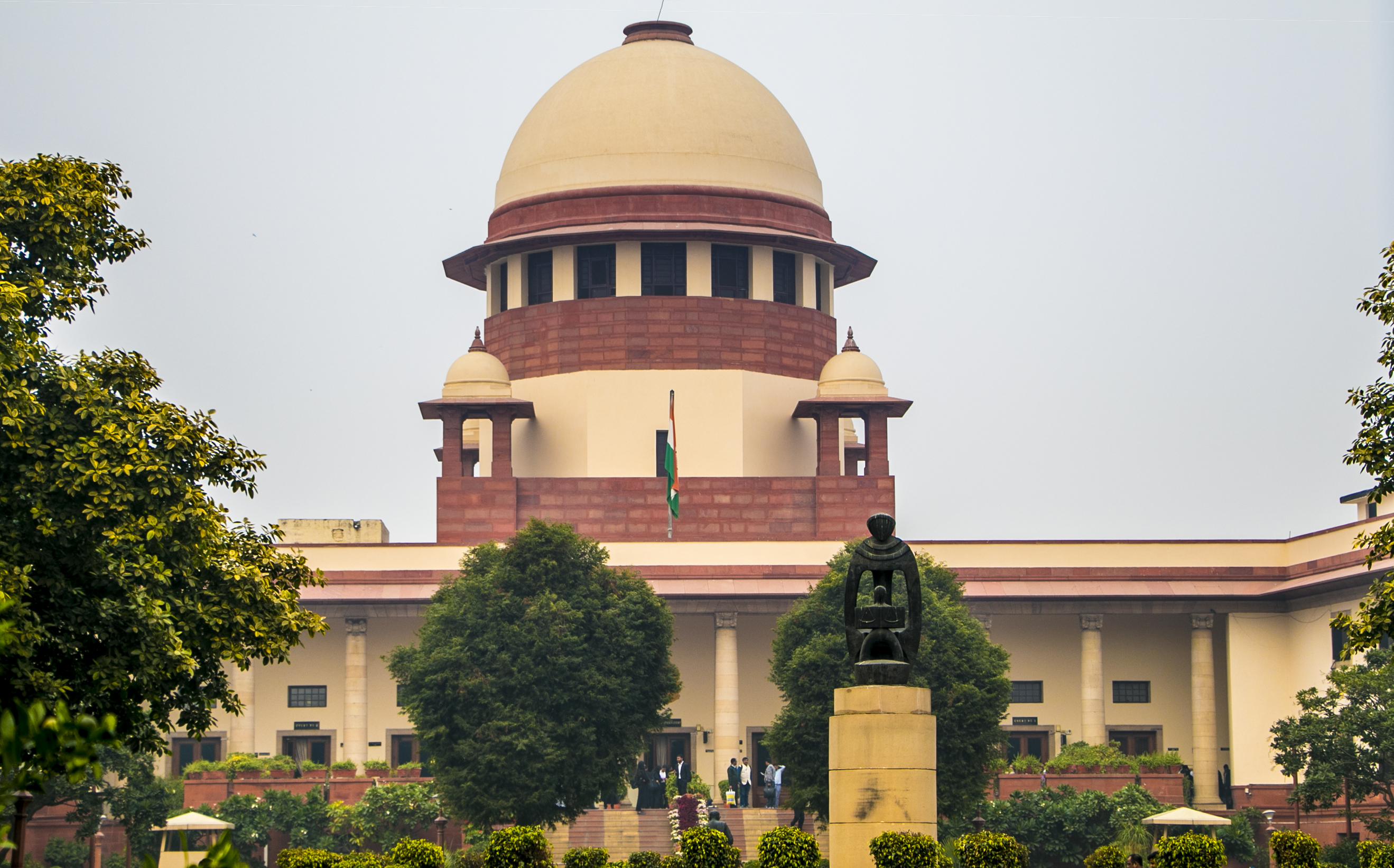In CRIMINAL APPEAL NO.163 of 2010-SC- SC acquits man in light of hypothesis that his wife committed suicide; reaffirms principle that accused merely has to create a doubt & it is for the prosecution to establish beyond reasonable doubt that no benefit can flow to accused
Justices B.R. Gavai, Pamidighantam Sri Narasimha & Aravind Kumar [04-01-2024]

Read Order: DARSHAN SINGH v. STATE OF PUNJAB
Tulip Kanth
New Delhi, January 5, 2024: The Supreme Court has set aside the judgment of conviction against a husband accused of murdering his wife after considering a strong hypothesis that the deceased had committed suicide. According to the Top Court, this fact was sufficient to create a doubt in favour of the accused.
The factual background of the case was that the deceased, Amrik Kaur was married to Darshan Singh, the appellant, some time in 1988. The marriage was arranged through Melo Kaur (PW-3), the cousin sister of the deceased. The prosecution alleged that their marital relationship was strained owing largely to the fact that Darshan Singh had developed an illicit partnership with Rani Kaur (A2).
Several relatives had prevailed on the appellant to put an end to his relationship with Rani Kaur, but to no avail. The illicit relationship between Darshan Singh and Rani Kaur was said to have lasted for at least three years before the fateful day. It was the case of the prosecution that on the intervening night of 18.05.1999 and 19.05.1999, Darshan Singh and Rani Kaur, with the motive of eliminating the deceased, administered poison and intentionally caused the death of Amrik Kaur.
On these allegations, Darshan Singh and Rani Kaur were prosecuted for charges under Section 302 r/w Section 34 IPC. The Trial Court convicted both the accused persons for the offence under Section 302 r/w Section 34 and sentenced them to undergo imprisonment for life.
The 3-Judge Bench of Justice B.R. Gavai, Justice Pamidighantam Sri Narasimha & Justice Aravind Kumar was considering an appeal by special leave arising out of a judgment by the High Court of Punjab & Haryana upholding the order of conviction and sentence, as against Darshan Singh (the appellant) and allowing the appeal of Rani Kaur (Accused No. 2), thereby acquitting her of all charges. The State of Punjab had not challenged the acquittal of Rani Kaur by filing any special leave petition.
Noting the fact that there was no eye-witness to the incident and the case of the prosecution was based on on circumstantial evidence, the Bench said, “the normal approach in a case based on circumstantial evidence is that the circumstances from which an inference of guilt is sought to be drawn must be cogently and firmly established; that those circumstances should be of a definite tendency unerringly pointing towards the guilt of the accused; that the circumstances taken cumulatively should form a chain so complete that there is no escape from the conclusion, that within all human probability, the crime was committed by the accused and they should be incapable of explanation on any hypothesis other than that of the guilt of the accused and inconsistent with his innocence.” Reference was made to Sharad Birdhichand Sarda v. State of Maharashtra [LQ/SC/1984/171].
In the present matter, the Trial Court found both the accused guilty but the High Court had confirmed the order of conviction only against the appellant and extended benefit of doubt to Rani Kaur. The appellant having failed to give a proper and believable explanation was, in fact, used as an additional link in the chain of circumstances.
In this case, the presence was sought to be proved by the prosecution on the basis of the testimony of PW-3, PW-4, PW-5 and the statements of the accused at the 313 stage. The Court opined that the presence of the appellant and Rani Kaur in the appellants house in the intervening night of 18.05.99 and 19.05.99, hadnot been firmly and cogently established. There were several omissions that have been brought out in the cross examination of PW-3 and PW-4, which seriously dented the credibility of their testimony.
“If the PWs had failed to mention in their statements u/s 161 CrPC about the involvement of an accused, their subsequent statement before court during trial regarding involvement of that particular accused cannot be relied upon. Prosecution cannot seek to prove a fact during trial through a witness which such witness had not stated to police during investigation. The evidence of that witness regarding the said improved fact is of no significance”, the Bench said.
Taking note of the fact that PW-3 claimed to be an illiterate witness, the Bench opined, “We are cognizant that the appreciation of evidence led by such a witness has to be treated differently from other kinds of witnesses. It cannot be subjected to a hyper-technical inquiry and much emphasis ought not to be given to imprecise details that may have been brought out in the evidence. This Court has held that the evidence of a rustic/illiterate witness must not be disregarded if there were to be certain minor contradictions or inconsistencies in the deposition.”Reference was made to State of U.P. Vs. Chhoteylal[LQ/SC/2011/95] ; Dimple Gupta (minor) Vs. Rajiv Gupta, [LQ/SC/2007/1296].However, the Bench held that the testimony of PW-3 suffered not merely from technical imperfections, there were glaring omissions and improvements that have been brought out in the cross-examination, which cannot be attributed to the illiteracy of the individual deposition.
The Bench also refused to rely solely on the testimony of the chance witness to prove that the appellant was escaping along with Rani Kaur after having murdered his wife.
The appellant had set up a defence that the deceased had committed suicide. This, according to the Bench, had raised a doubt as regards his defence that the deceased had committed suicide. According to the Bench, there appeared to be no dispute as to the fact that the death was caused by poisoning. The doctor’s testimony on the basis of the chemical examiner’s report that the cause of death was linked to aluminium phosphide poisoning remained unchallenged. In fact, in his 313 statement, even the appellant stated that the deceased consumed poison (aluminum phosphide) and committed suicide.
“The main principle to be satisfied in a case of conviction based on circumstantial evidence is that the proved circumstances must be complete and incapable of explanation of any other hypothesis than that of the guilt of the accused but should be inconsistent with his innocence- in other words, the circumstances should exclude every possible hypothesis except the one to be proved”, the Bench said.
In this case, the Bench held that it couldn’t be said that the proved circumstances, even if presence was proved, taken with other circumstances would lead to an unfailing conclusion that the appellant and Rani Kaur were guilty of murdering his wife. There was alive a strong hypothesis that the deceased had committed suicide, which explanation was led by the appellant in his statement under Section 313 CrPC, and it was sufficient to create a doubt in our minds.
“It is trite law that the statement recorded u/s. 313 CrPC cannot form the sole basis of conviction. Therefore, the presence of the appellant cannot be found solely based on his statement, notwithstanding the lack of independent evidence led by the prosecution”, the Bench further noted.It was also held that the State cannot on the one hand accept the verdict of the Court that the presence of Rani Kaur along with the appellant is doubtful and at the same time, maintain its case that the two of them were jointly present, committed the offence together and escaped together.
Referring to Bhimsingh Vs. State of Uttarakhand, the Bench reaffirmed that the conviction is to be based on circumstantial evidence solely, then there should not be any snap in the chain of circumstances. If there is a snap in the chain, the accused is entitled to benefit of doubt. Therefore, allowing the appeal, the Bench set aside the findings of conviction.
Sign up for our weekly newsletter to stay up to date on our product, events featured blog, special offer and all of the exciting things that take place here at Legitquest.




Add a Comment